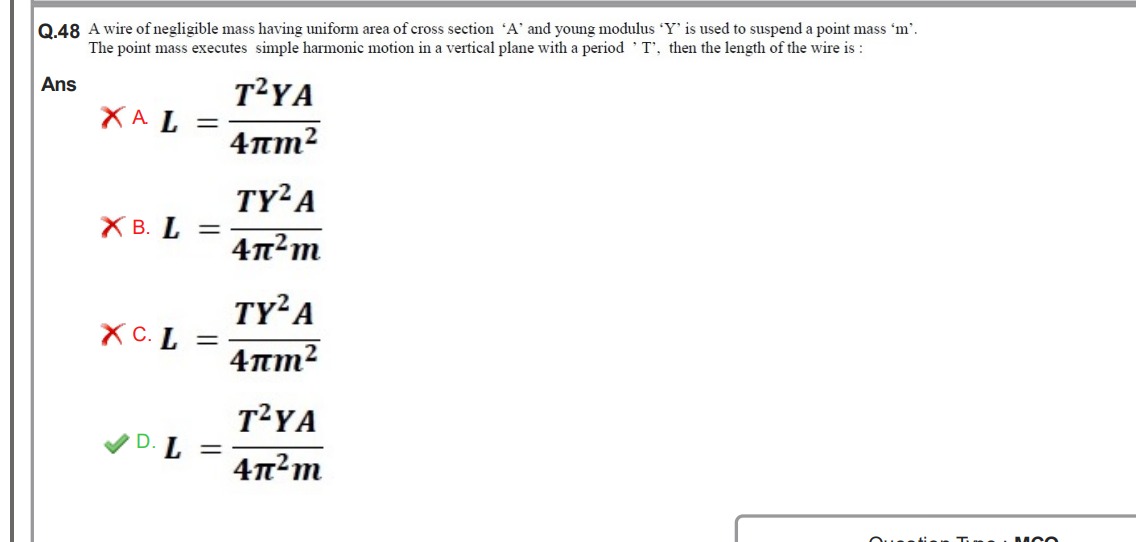Question
Question: A wire of negligible mass having uniform area of cross section 'A' and young modulus 'Y' is used to ...
A wire of negligible mass having uniform area of cross section 'A' and young modulus 'Y' is used to suspend a point mass 'm'. The point mass executes simple harmonic motion in a vertical plane with a period 'T', then the length of the wire is:

L = \frac{T^2YA}{4\pi m^2}
L = \frac{TY^2A}{4\pi^2m}
L = \frac{TY^2A}{4\pi m^2}
L = \frac{T^2YA}{4\pi^2m}
L = \frac{T^2YA}{4\pi^2m}
Solution
The wire acts as a spring. The effective spring constant 'k' of the wire can be determined from Young's Modulus (Y), cross-sectional area (A), and length (L).
Young's Modulus is given by:
Y=StrainStress=ΔL/LF/A=AΔLFL.
From this, the restoring force F=(LYA)ΔL.
Comparing with Hooke's Law F=kx, the spring constant k=LYA.
For a mass-spring system, the period of simple harmonic motion (T) is given by:
T=2πkm
Substitute the value of k:
T=2πYA/Lm
T=2πYAmL
Square both sides:
T2=4π2YAmL
Rearrange to solve for L:
L=4π2mT2YA
